04 Feb Students Visualizations
Students Visualizations
a) Visualization of an unsteady hot plume and turbulent jet
This image captures the visualization of an unsteady hot plume and turbulent jet by means of white smoke statistical analysis, which was done during the course Turbulent Flows, Physics Laboratory 3 -DISAT on 29/11/2024. The emission of a turbulent jet is generated from the inhalation and subsequent release of cigarette smoke. Objective: Evaluate the Reynolds number of the flow by analyzing small fluctuations. (Photo by: Eleonora Zulli, 2024-2025)
For more details please see the Description
b) Determination of the Reynolds number, wavelength, and phase velocity in unstable and turbulent jets, visualized by white smoke
Optical methods, videos, and images made with a Nikon D3500 reflex camera and Samsung A52s smartphone, analyzed with post-processing software
Tracker (OSP, www.phylets.org), Paint (Microsoft Corporation), Microsoft Excel
(Microsoft Corporation).
The exercise was carried out on 10/11/2023 in classroom 3N of the Polytechnic of Turin.
REPORT, PRESENTATION, EVALUATION AND ANALYSIS OF THE RESULTS carried out by:
Group 1:
Li Causi Gaspare 301756
Patrucco Marco 310320
Simone Nicoletta 305418
Talamucci Tommaso 309309
Tressoldi Elisa 315313
Group 2:
Dedola Jacopo 308235
Gangarossa Calogero 308378
Sicca Beatrice 312067
Feltrin Matteo
Lazzarin Elena
Didactic Laboratory of the Turbulent Flows Course
Academic year 2023/2024
For more details see Student Report
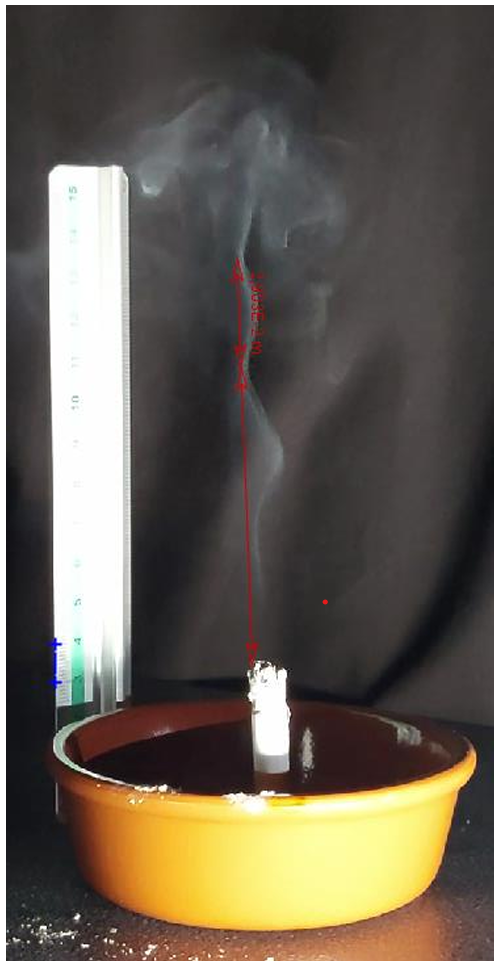
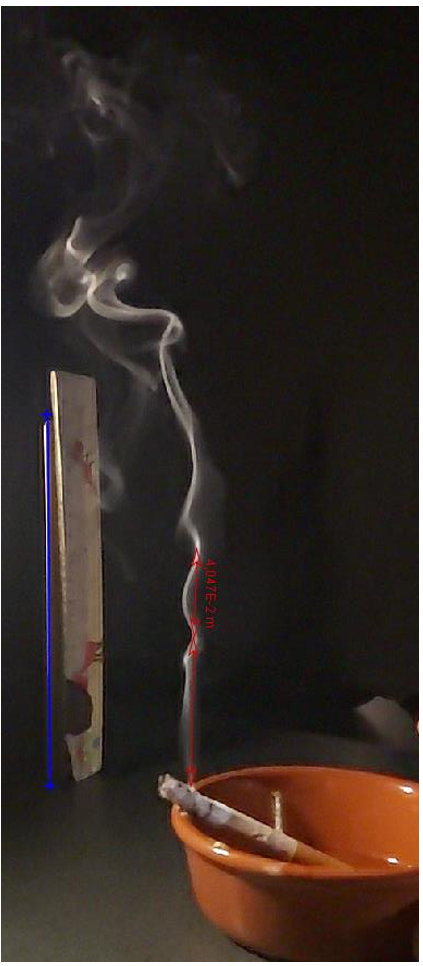
c) Visualization of a jet
This image captures the visualization of a jet flow using cigarette smoke. A desk lamp on the left side illuminates the smoke, highlighting the flow patterns and providing clear contrast to observe the jet’s movement and dynamics.
(Photo: Giuseppe Pipia, 2015)

d) Flow visualization
Visualization of the flow produced by a cigarette. A desk lamp has been used to lighten the smoke.
(Photo: Giuseppe Pipia, 2015)

Homogeneous and isotropic turbulence
Pseudocolor plot for the dimensionless velocity component u, 256^3 grid.
(Fabrizio Donati, 2011)
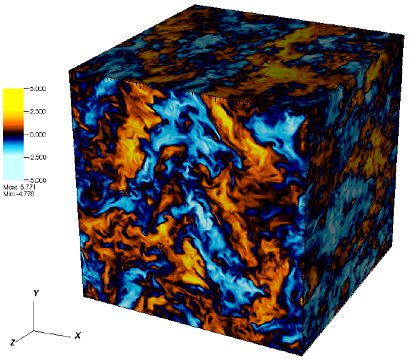
Homogeneous and isotropic turbulence
Isosurface plot of vorticity magnitude. Top: |ω| < 1 (left) and 1 <|ω| < 2 (right). Middle: 2 < |ω| < 3 (left) and 3 < |ω| < 4 (right).
(Fabrizio Donati, 2011)
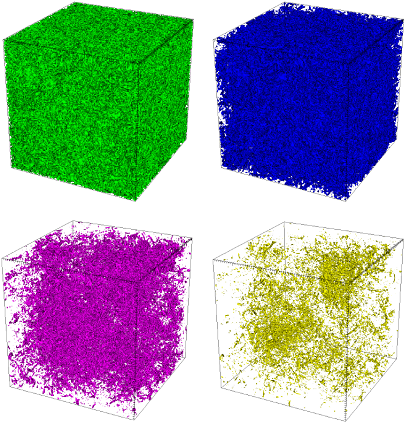
Homogeneous and isotropic turbulence
Velocity vector plot 0 ÷ 6 (cyan to black) on a vorticity magnitude pseudocolor plot 0 < |ω| < 4 (yellow to red) for different filtered fields. Top left: reference field. Top right: filament 0-150/50. Bottom left: cross 0-20. Bottom right: cross 30-150.
(Fabrizio Donati, 2011)
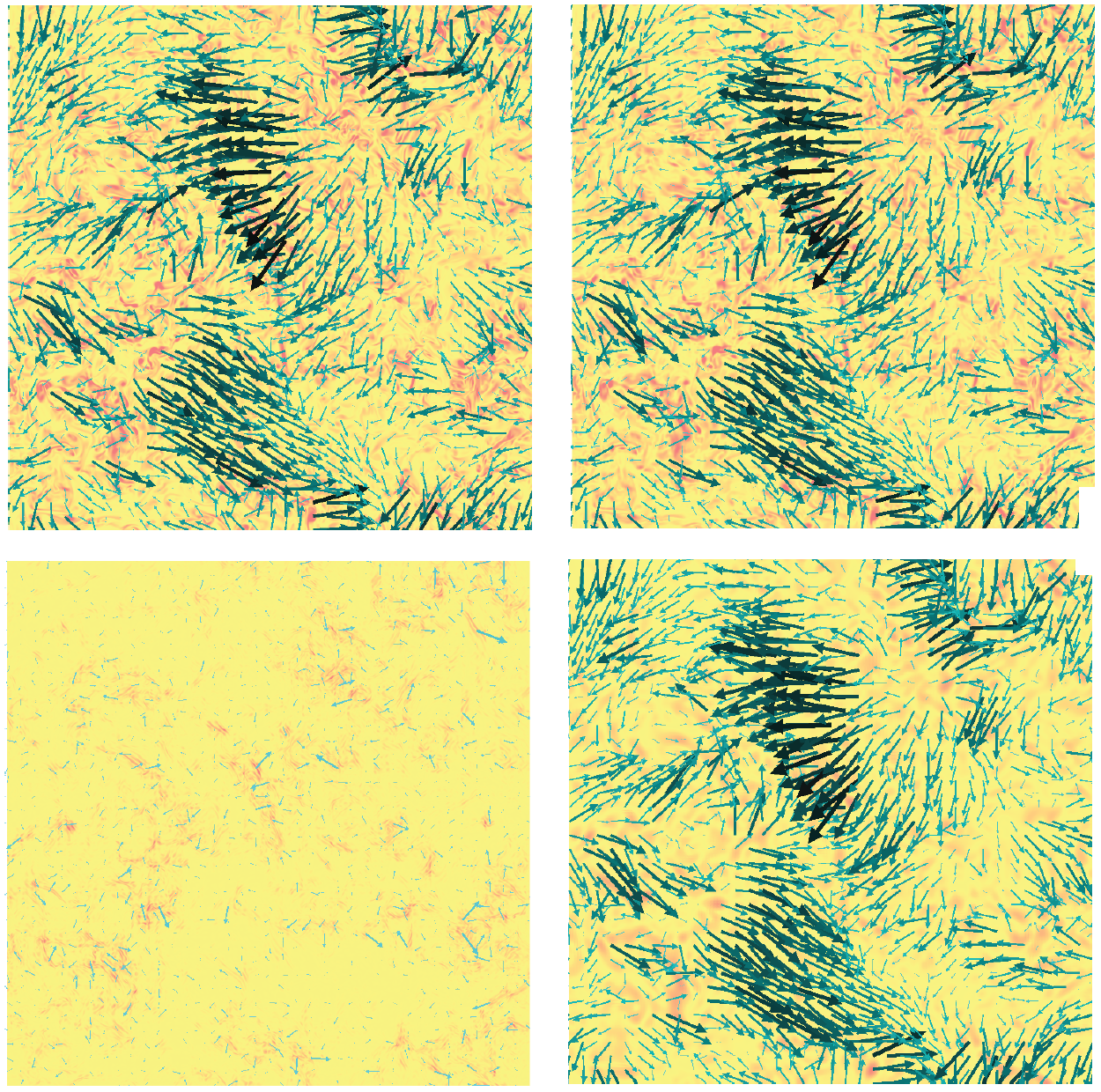
Turbulent channel flow
Direct numerical simulation, Re_τ=180. Streamwise velocity fluctuations at y+=21.6. (The mean flow is from left to right) (2010).
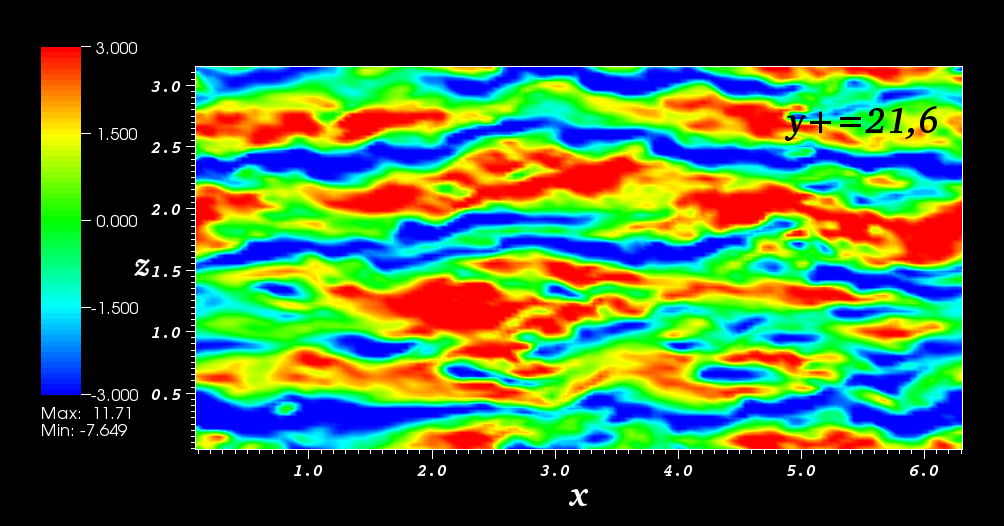
Turbulent channel flow
Direct numerical simulation, Re_τ=180. Streamwise velocity fluctuations at y+=180. (The mean flow is from left to right)
(2010).
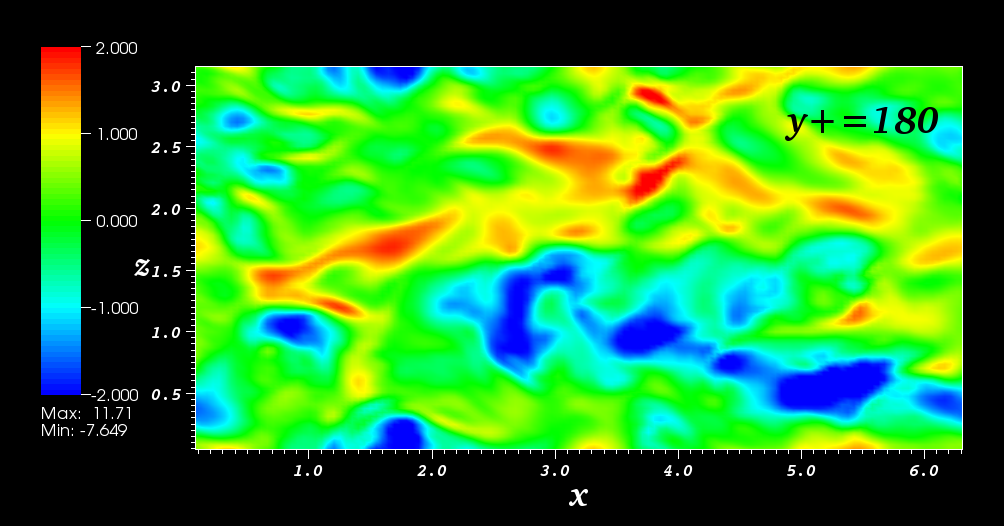
Poiseuille channel flow
For different K and Φ, two types of initial conditions, antisymmetric and symmetric, have been applied.
a) (Re=10000, k=5, Φ=π/2, antisymmetric initial condition). The perturbation velocity field in the physical plane (z, y) is normal to the streamwise direction, x. See the MOVIE for the complete temporal evolution.
See the (Andrea Borio, Giuseppe Craparotta, Gloria Scaletta, Fluid Dynamics, Master Degree in Mathematical Engineering, 2012)
b) (R=10000, k=0.9, symmetric initial condition, Φ=π/12). The perturbation velocity field in the physical plane (x, y) is normal to the spanwise direction, z.
See the (Alessandro Bay, Melania Carfagna, Anna Sapienza, Fluid Dynamics, Master Degree in Mathematical Engineering, 2012)



